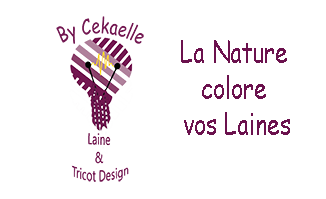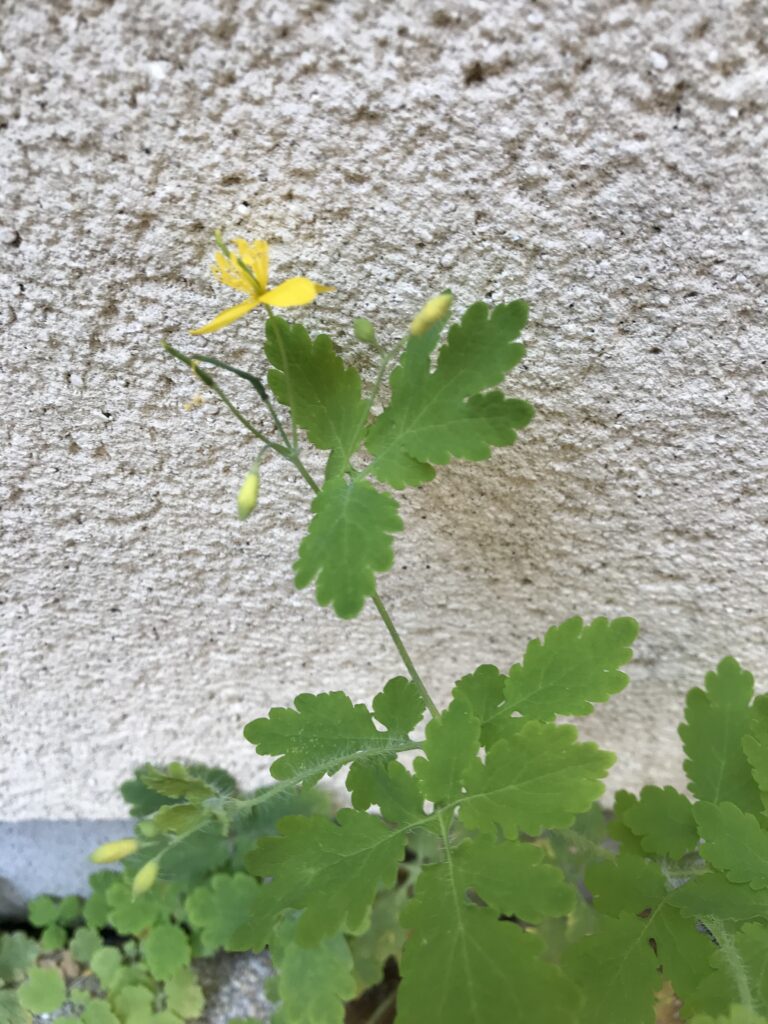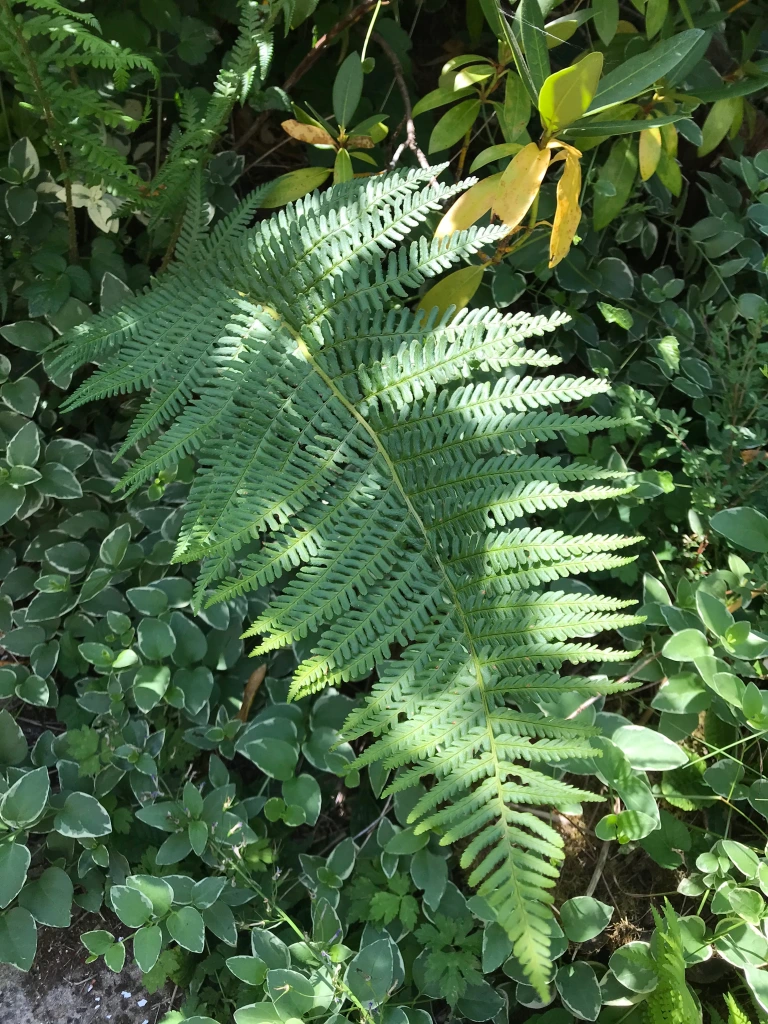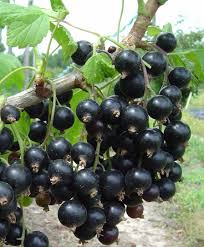
July is the time for jams and jellies. This is the period when my garden is full of fruits, particularly blackcurrants. Among my readings, I saw that you could dye with the waste from the blackcurrant jelly preparation. I remembered it after adding sugar to pop the grains… Too bad! My wool will be sweet! In fact, I think the sugar will disappear upon rinsing. On the other hand, will it have an influence on the dye?
So I collected the waste from 3 kg of fruit, added enough water to prepare my dye bath and cooked this preparation for 1 hour. To prevent this waste from being mixed with the fiber, I filtered it through an old curtain after cooking, enclosed it in this filter and left it in the dye bath.
I bitten superwash fingering merino from Lily Neige ( https://filature-de-la-vallee-des-saules.fr/boutique/fr/home/1350-single-100-merinos-superwash.html ) with 10% alum and 5% cream of tartar purchased from Alysse creations.

I immersed my 5 skeins in this bath and they very quickly took on a pretty red currant color.
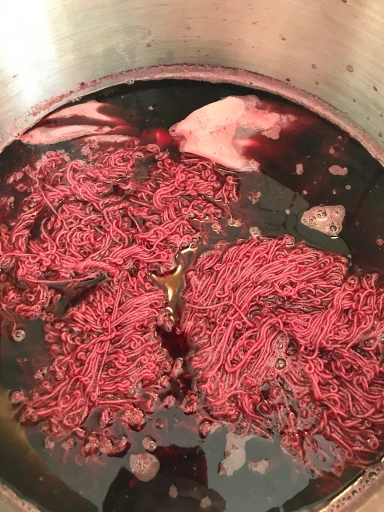
Finally after cooking, this color became more intense but I knew that rinsing would change it….
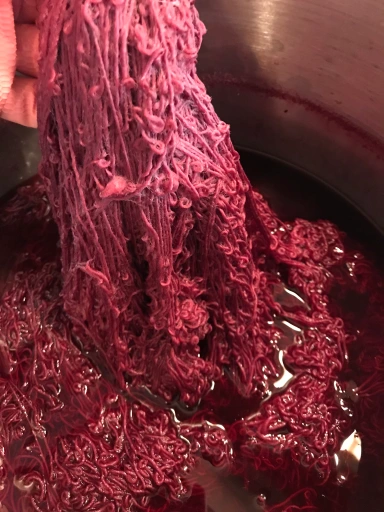
I did about ten rinses, not because the color was bleeding but because it was changing. And here is the result after the last rinse:
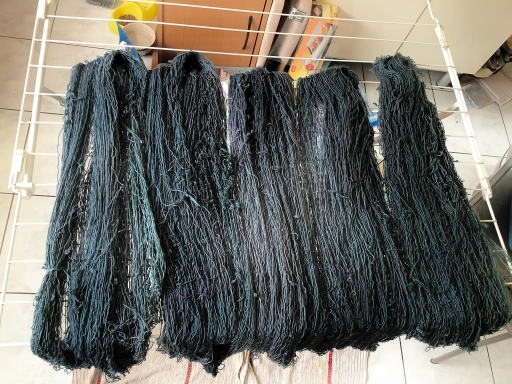
It is very difficult to take a photo of. The color has a dominant indigo with some purple reflections (insufficient rinsing?) and pine green.
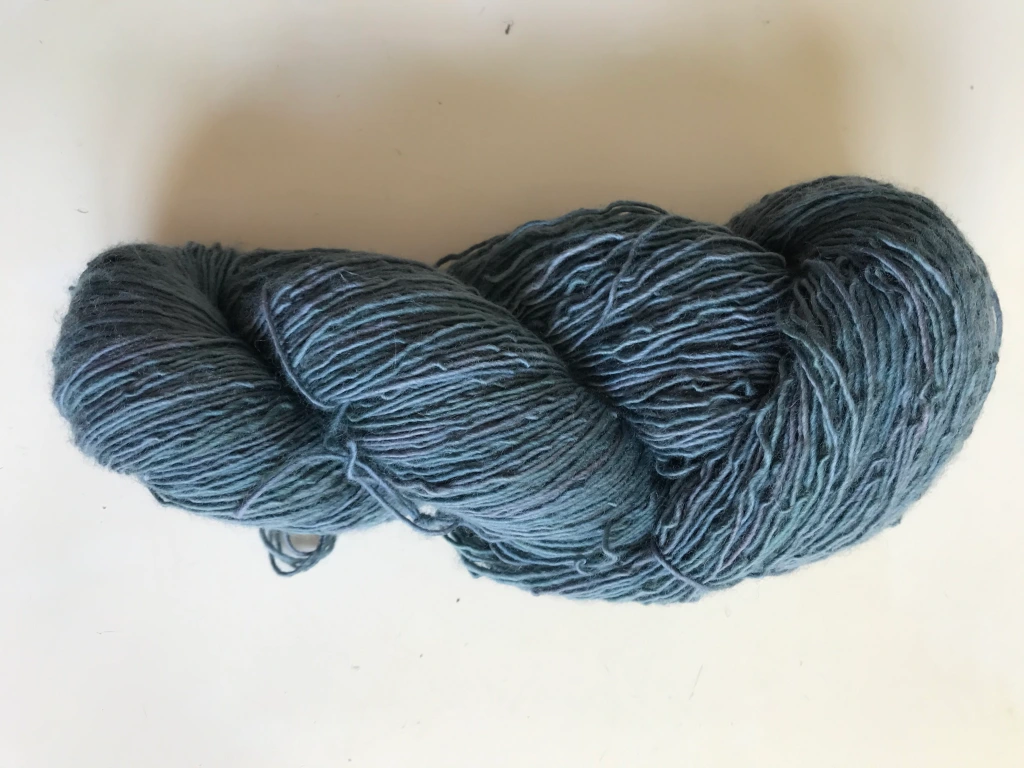
I regret not having more skeins available to dye, to see what using the exhaustion bath would do. In these difficult post-COVID times, I don't think I can count on the speed of the post office or other carriers for fast delivery. I still kept the dye bath and ordered the wool to dye. If I receive it too late, too bad! this will be postponed until 2021.
The hold of the wool to dye is perfect for the beginner that I am and I plan to continue with this supplier. The thread is thin and gets tangled easily but that doesn't put me off. Maybe I'll add more links next time.
To be continued….
